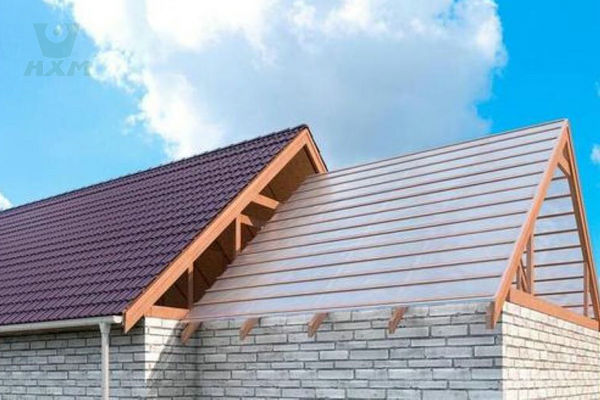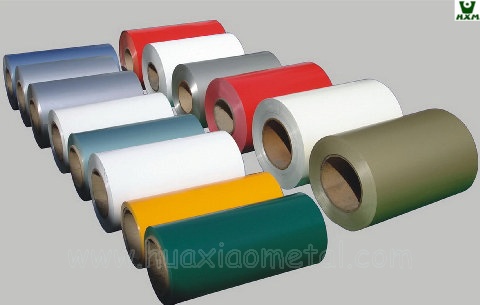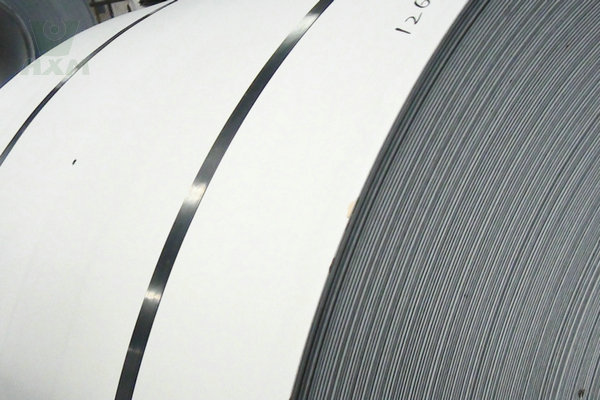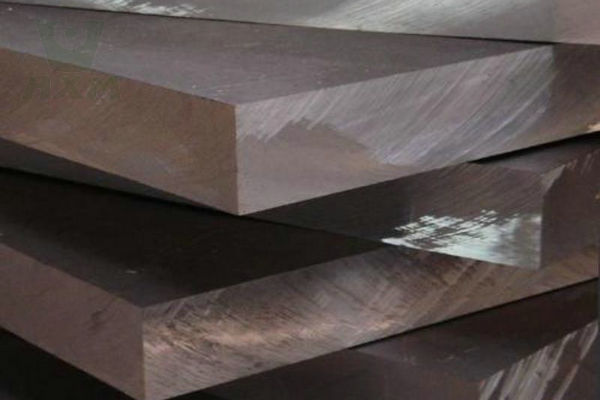When we face industrial and construction projects, the choice of materials often determines the success of the project. There are often many different materials involved in this selection process, and two common options are powder coated steel vs stainless steel. Both materials have unique properties, advantages, and disadvantages in their respective fields, so you need to understand them better before you source them.
In this article, we’ll take an in-depth look at powder coated steel vs stainless steel, comparing their physical properties, cost, and availability, as well as their suitability for different areas. By understanding the differences between these two materials, you will be able to make more informed choices about which material to use in your project to achieve the best results. This materials battle between powder-coated steel and stainless steel may provide important inspiration and a decision-making basis for your next project.

About Powder Coated Steel vs Stainless Steel
Powder Coated Steel
Powder-coated steel is a surface-treated steel that provides superior protective properties and appearance. The preparation process involves mixing finely powdered pigments and resin, then evenly coating the mixture on the steel surface. Through electrostatic adsorption and high-temperature baking, the powder coating becomes a solid surface that resists corrosion, scratches, and everyday wear and tear.

Advantages of Powder Coated Steel Include:
- 1. Excellent anti-corrosion performance: Powder coating forms a strong protective layer that can effectively resist oxidation, corrosion, and chemical attack.
- 2. Aesthetics: Powder coating offers a variety of color and texture options, making it popular for construction and interior decoration.
- 3. Durability: Due to its solid surface, powder-coated steel has excellent durability and is not easily damaged or deformed.
- 4. Environmentally friendly: No solvents are used in the powder coating process, so the impact on the environment is relatively low, and the remaining powder can be recycled.
- 5. Cost-effectiveness: Relative to some other high-performance materials, powder-coated steel is generally less expensive, making it more economical in large-scale applications.
Stainless Steel
Stainless steel is an alloy composed primarily of iron, chromium, and other elements such as nickel and molybdenum. Stainless steel is widely used in various fields due to its excellent corrosion resistance and strength. Its name “stainless” partly reflects its resistance to corrosion in humid, corrosive and high-temperature environments.

Features of Stainless Steel Include:
- 1. Corrosion Resistance: Stainless steel has excellent resistance to corrosion, especially in humid or chemical environments, making it ideal for applications involving liquids, chemicals or seawater.
- 2. Strength: Stainless steel has high strength and can withstand high stress and heavy pressure.
- 3. High-temperature resistance: Stainless steel maintains its strength and stability at high temperatures, so it is suitable for stoves and high-temperature equipment.
- 4. Hygiene: Stainless steel has a smooth surface and is easy to clean, so it is widely used in medical equipment, food processing and pharmaceutical industries.
- 5. Aesthetics: The appearance of stainless steel is modern and bright, making it suitable for high-end decoration and interior design.
The above is an overview of materials for powder coated steel and stainless steel. Next, we’ll delve into their physical properties to gain a more complete understanding of their differences and suitability.
Powder Coated Steel vs Stainless Steel: Physical Properties Comparison
1. Density and Weight:
Powder-coated steel: Powder-coated steel is relatively lightweight and has a lower density, so it performs well in applications that require lightweight construction. This also helps reduce shipping costs.
Stainless steel: Stainless steel is denser and therefore heavier than powder-coated steel. This can provide additional stability and sturdiness in some applications, but can also increase manufacturing and shipping costs.
2. Strength and Hardness:
Powder-coated steel: While powder-coated steel can provide some strength, it’s generally not as strong as stainless steel. It has a relatively low hardness and is more susceptible to scratches and abrasions.
Stainless Steel: Stainless steel is known for its exceptional strength and hardness, allowing it to withstand greater loads and impacts. This makes it useful in applications requiring a high degree of durability.
3. Corrosion Resistance:
Powder-coated steel: Powder coating provides a degree of corrosion protection, but it is dependent on the integrity of the coating. If the coating is compromised, the steel may become susceptible to rust.
Stainless Steel: Stainless steel has excellent corrosion resistance due to its high chromium content, allowing it to maintain its appearance and performance even in harsh environments. This makes it the material of choice for the marine, chemical and food processing industries.
4. Thermal Conductivity:
Powder-coated steel: Powder-coated steel typically has a lower thermal conductivity, which means it may not conduct heat as well as stainless steel at high temperatures.
Stainless steel: Stainless steel has a higher thermal conductivity, making it suitable for applications that require thermal conductivity properties, such as stoves and heat exchangers.
5. Lifespan and Durability:
Powder-coated steel: Powder-coated steel typically has a shorter lifespan because the coating can become damaged over time and use, requiring regular maintenance and recoating.
Stainless steel: Stainless steel generally has a longer service life because its corrosion resistance and durability allow it to remain in good condition for many years, reducing maintenance costs.
By comparing these physical properties, we can see significant differences between powder-coated steel and stainless steel. The choice of material depends on specific project requirements, including load, environmental conditions and cost considerations. When we consider these factors, we can make a more informed choice of materials for a specific application.
Powder Coated Steel vs Stainless Steel: Cost and Availability
1. Cost:
Powder-coated steel: Typically, powder-coated steel is relatively low-cost. This is because the raw materials themselves are cheaper and the powder coating process is relatively simple and does not involve high temperature processing. Therefore, in highly cost-sensitive projects, powder-coated steel may be a more affordable option.
Stainless steel: Stainless steel is generally more expensive to manufacture and process because it is an alloy that contains high-value elements such as chromium and nickel. In addition, the processing of stainless steel may require more processes and specialized equipment. Therefore, stainless steel may add cost in some projects with limited budgets.
2. Availability:
Powder Coated Steel: Powder coated steel is widely available in the market and can be easily found in various specifications and shapes. This means that suppliers and manufacturers are often able to offer large inventories and a variety of color options to suit the needs of different projects.
Stainless Steel: The availability of stainless steel is also quite high, but may be limited. Some special alloys or specifications may require custom fabrication, which may result in longer lead times. However, in most cases, common stainless steel specifications and products are readily available.
It’s important to note that costs and availability vary by market, geography and specific needs. Therefore, when selecting materials, it is recommended to communicate with the supplier or manufacturer to obtain the most accurate cost estimate and delivery time.
Taking cost and availability into consideration, you can better decide when to choose powder-coated steel or stainless steel to meet your project’s budget and time requirements. Each material has its own unique advantages, and understanding these factors will help you make an informed decision.
Powder Coated Steel vs Stainless Steel: Application
1. Architecture and Structure:
Powder Coated Steel: Powder coated steel is widely used in the construction and structural fields. Its corrosion-resistant properties and diverse color options make it ideal for use in outdoor doors, windows, railings, guardrails and roofing materials. In addition, its lightweight properties help reduce the weight of building structures and reduce costs.
Stainless steel: Stainless steel is often used in construction where high corrosion resistance is required, such as seaside buildings, exterior wall decoration of high-rise buildings, and bridge structures. Its corrosion resistance, durability and modern appearance make it the first choice for high-end construction projects.
2. Manufacturing:
Powder-coated steel: Powder-coated steel is commonly used in manufacturing to create a variety of products, including furniture, machine parts, and industrial equipment. Its wear resistance and aesthetics make it suitable for applications requiring long-term use and good appearance.
Stainless Steel: Stainless steel is used in the manufacturing industry to make chemical equipment, food processing equipment, aerospace components, and other products that require a high degree of corrosion resistance and strength.
3. Kitchen Utensils and Cutlery:
Powder Coated Steel: Powder coated steel is commonly used in the manufacture of kitchen utensils and tableware such as pans, cookware, dining tables and chairs. Its wear resistance and thermal conductivity make it suitable for use in the culinary field.
Stainless Steel: Stainless steel is a common material used in the restaurant industry because it is easy to clean, non-reactive to food, and has hygienic properties.
4. Artwork and Decorations:
Powder-coated steel: Powder-coated steel is often used for interior and exterior decorations, sculptures, and artwork because it allows for a variety of colors and textures to be achieved.
Stainless steel: Due to its modern appearance and corrosion-resistant properties, stainless steel is also often found in artwork and decorations, especially in public art and sculptures.
5. Automobile Industry:
Powder Coated Steel: Powder coated steel is widely used in automobile manufacturing for body parts, rims, frames, etc. Its appearance and anti-corrosion properties are key factors in a car’s appearance and durability.
Stainless Steel: Stainless steel is commonly used in automotive exhaust systems, exhaust pipes, air intake systems, and hydraulic parts because it can withstand high temperatures and corrosive gases.
In Conclusion:
When comparing the two materials, powder coated steel vs stainless steel, we take a closer look at their physical properties, cost and availability, areas of application, and environmental and sustainability advantages and disadvantages. This comparison helps us gain a more complete understanding of both materials and make informed choices in our projects.
Advantages of the Powder-Coated Steel:
- Lower cost, suitable for projects with limited budget.
- The lightweight properties help reduce the weight of the building structure.
- Highly aesthetically pleasing, available in a variety of colors and textures.
- Excellent in manufacturing, furniture making, and cooking utensils.
Advantages of the Stainless Steel:
- Excellent corrosion resistance, suitable for highly corrosive environments.
- Excellent strength and stiffness for applications requiring high durability.
- Provides a modern look and high-end feel to the building.
- Excellent performance in food processing, medical equipment, and high-temperature environments.
- Additionally, both materials offer environmental and sustainability benefits. Powder-coated steel performs well in terms of recyclability, low VOC emissions and cost-effectiveness. Stainless steel stands out for its recyclability, long life, and hygienic properties.
Final material selection should be based on the specific needs of the project, including load, environmental conditions, budget, and sustainability goals. Whether powder-coated steel or stainless steel, each has its own unique value in its own field, providing strong, beautiful, and sustainable solutions for a variety of projects.







